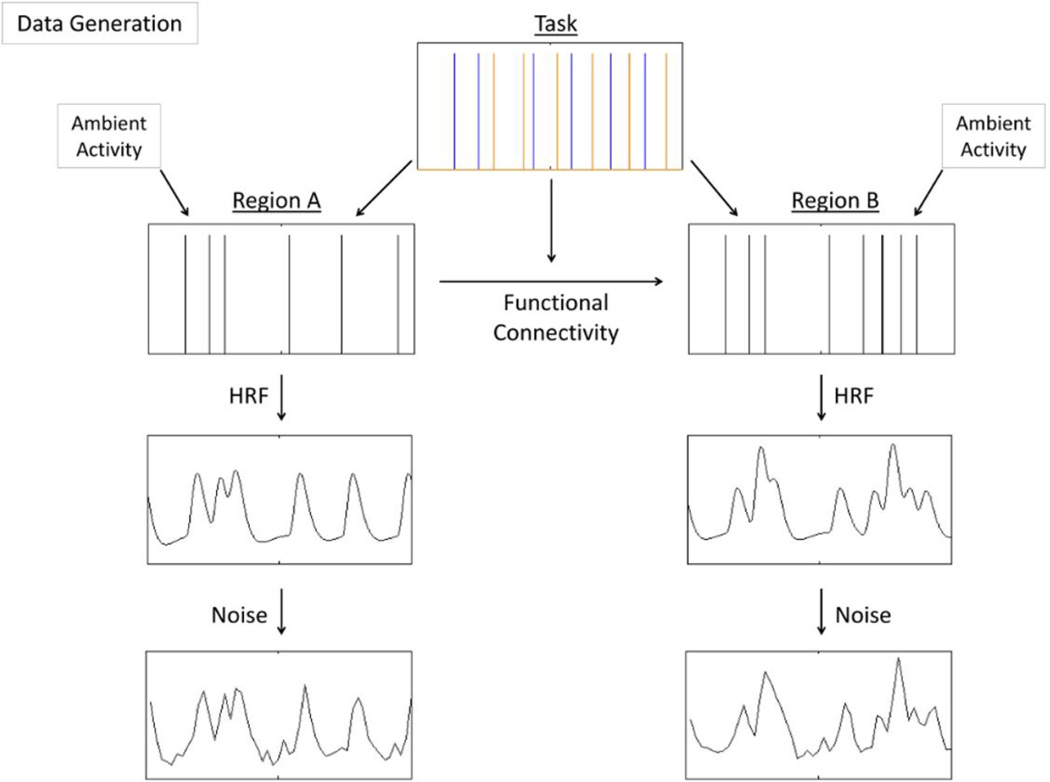Figure 1.
For each simulation, a task with two stimulus conditions was randomly generated (shortened task sequence depicted). This task induced neural events probabilistically in two simulated neural regions, A and B. Region A then induced a lagged neural event in region B with some probability (i.e. functional connectivity strength), and this probability was dependent on the task condition that produced the original neural event in region A. Additionally, in some experiments, each region also displayed task-unrelated ambient activity between stimuli presentations. The neural events of each region were then convolved with the canonical hemodynamic response function (HRF) and random noise was added, resulting in the BOLD signal of two regions with context dependent functional connectivity.

